-
FEBRASGO POSITION STATEMENT02-06-2025
Menopause in gynecologic cancer survivors: evidence for decision-making
Revista Brasileira de Ginecologia e Obstetrícia. 2025;47:e-FPS1
Abstract
FEBRASGO POSITION STATEMENTMenopause in gynecologic cancer survivors: evidence for decision-making
Revista Brasileira de Ginecologia e Obstetrícia. 2025;47:e-FPS1
Views330See moreKey points
• Although advances in the treatment of gynecological cancer have improved survival rates, they may also increase the effects of induced menopause, especially in young women.
• Cancer treatments such as oophorectomy, gonadotoxic chemotherapy, and pelvic radiotherapy can induce menopause.
• Gonadotoxic chemotherapy, especially alkylating-containing regimens, often damages ovarian function and may result in permanent menopause.
• Pelvic radiotherapy usually results in permanent loss of ovarian function unless ovarian transposition is performed.
• Diagnosing menopause after cancer is challenging, and common diagnostic criteria such as 12 months or more of amenorrhea and elevated follicle-stimulating hormone (FSH) levels are not entirely reliable, since ovarian function may return years after treatment.
• A multidisciplinary approach to post-cancer menopause is essential and should include an appropriate line of care, since hormone replacement therapy after treatment of gynecologic malignancy is controversial.
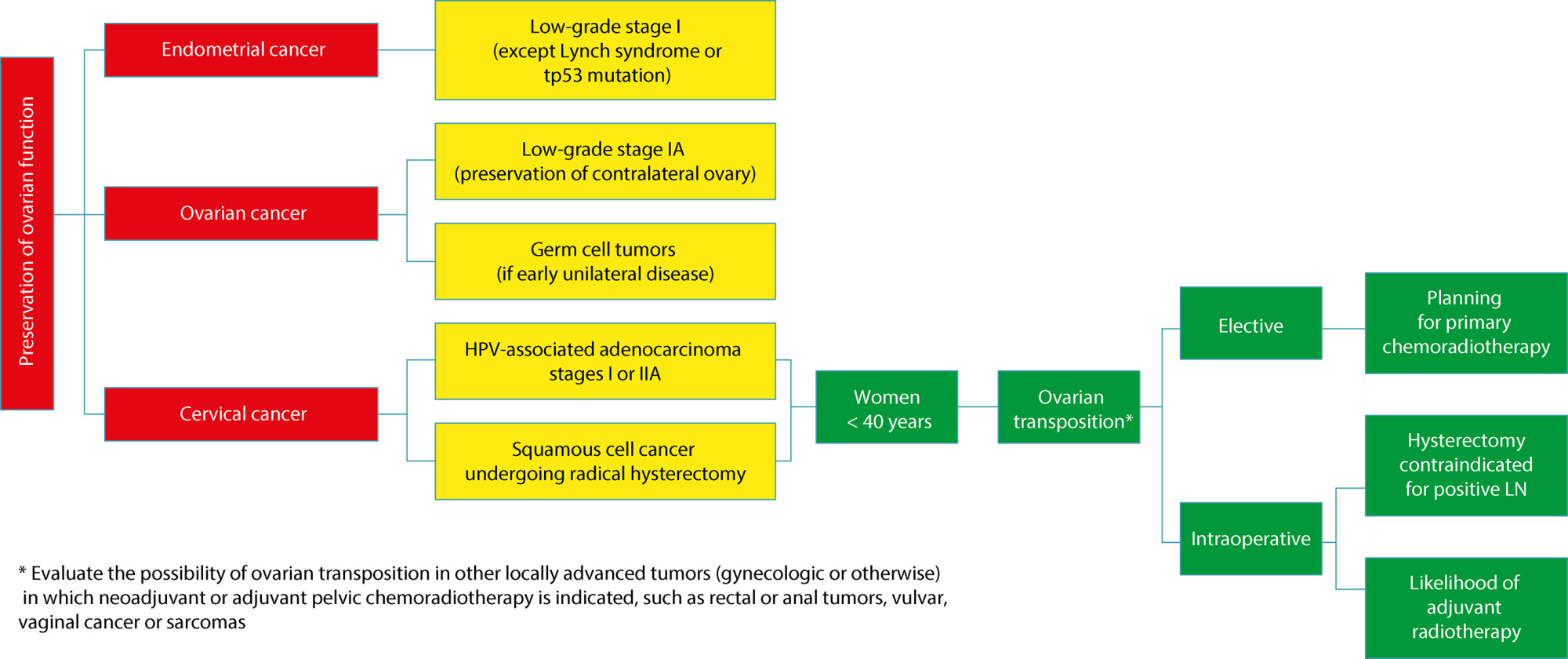
-
Original Article01-23-2025
A comparison of the efficacy of the effect of online versus face-to-face group counseling based on positive-approach on sexual intimacy of women after benign abdominal hysterectomy: a clinical trial
Revista Brasileira de Ginecologia e Obstetrícia. 2025;47:e-rbgo102
Abstract
Original ArticleA comparison of the efficacy of the effect of online versus face-to-face group counseling based on positive-approach on sexual intimacy of women after benign abdominal hysterectomy: a clinical trial
Revista Brasileira de Ginecologia e Obstetrícia. 2025;47:e-rbgo102
Views324See moreAbstract
Objective
The study investigates the influence of positive-approach counseling through both online and face-to-face group therapy on the sexual intimacy of women after benign complete abdominal hysterectomy, addressing challenges such as the loss of femininity and other psychosexual complications that disrupt the couple’s relationship post-surgery.
Methods
This is a parallel clinical trial, conducted in 2023 in Yazd, Iran; with sixty-six participants post- benign complete abdominal hysterectomy were randomly assigned to online and face-to-face counseling groups. Each group had eight 90-minute sessions, and data were collected using demographic and intimacy scale (IS) questionnaires at baseline, eighth week, and twelfth week follow-up. Statistical analysis used SPSS version 23 (P < 0.05).
Results
In the Online Group, the mean sexual intimacy score significantly increased from 72.42 ± 9.05 to 87.06 ± 7.98 at eight weeks and 90.30 ± 8.23 at twelve weeks (P < 0.001). In the Face-to-Face Group, the mean score increased from 70.21 ± 6.75 to 81.24 ± 5.55 at eight weeks and 85.03 ± 5.40 at twelve weeks (P < 0.001). Online counseling proved more effective than face-to-face counseling in enhancing sexual intimacy (P = 0.043).
Conclusion
Online and face-to-face counseling based on the positive approach improved sexual intimacy in women with a history of benign hysterectomy. Moreover, it seems that online counseling was more effective, so it is recommended that this method be employed in follow-up sessions after hysterectomy. Iranian Registry of Clinical Trials – IRCT20230209057373N1
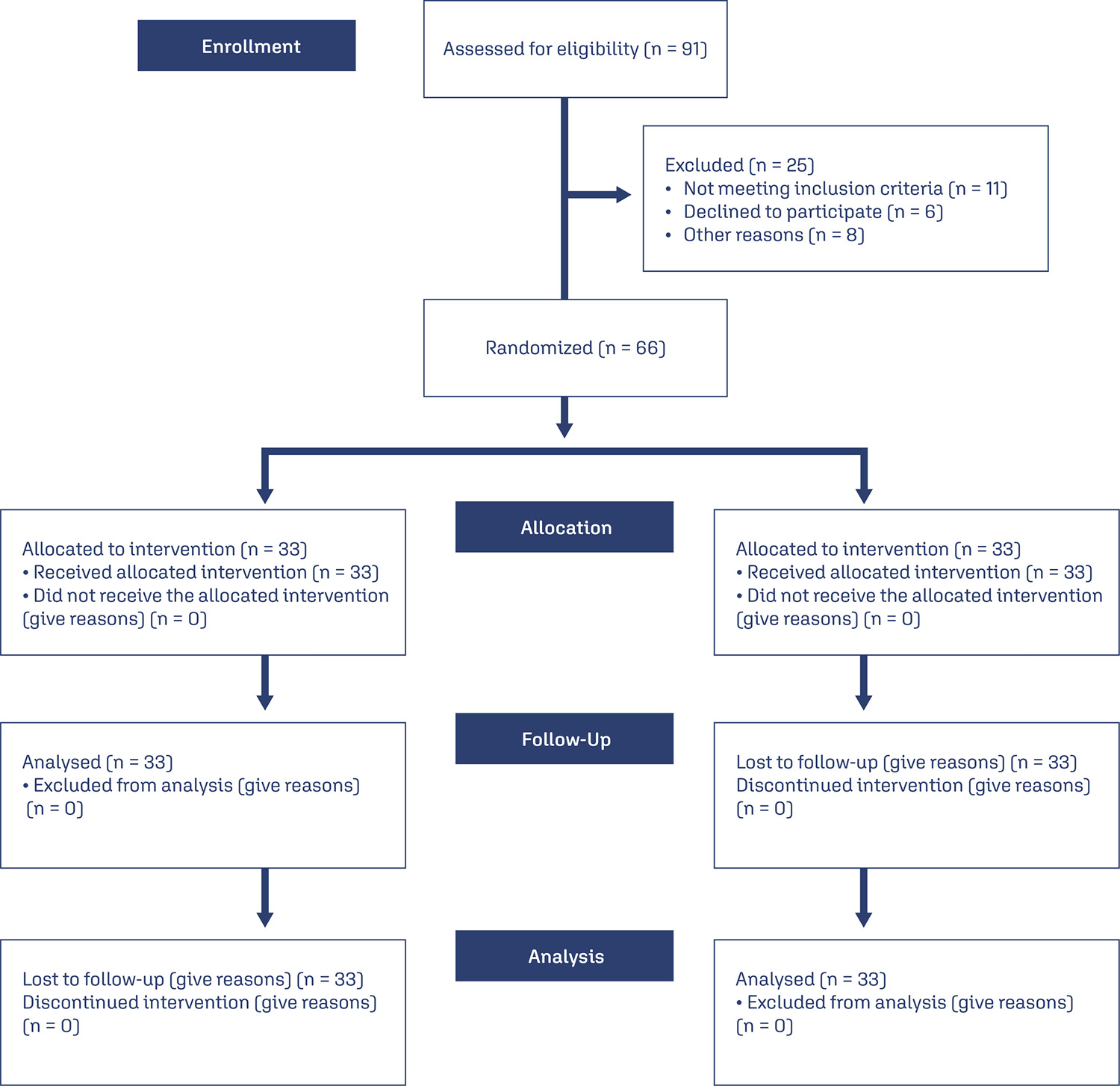
-
Original Article01-23-2025
Therapeutic resources used by physiotherapists for the relief of labor pain: a cross-sectional study
Revista Brasileira de Ginecologia e Obstetrícia. 2025;47:e-rbgo99
Abstract
Original ArticleTherapeutic resources used by physiotherapists for the relief of labor pain: a cross-sectional study
Revista Brasileira de Ginecologia e Obstetrícia. 2025;47:e-rbgo99
Views348Abstract
Objective
The aim of the study was to identify non-pharmacological therapeutic resources used by physiotherapists for pain relief during labor and childbirth.
Methods
This is a cross-sectional study conducted from January to March 2021, followed the STROBE guidelines. It included Brazilian physiotherapists with a minimum of two years in obstetric care experience. Data were collected using a 33-item online questionnaire, which covered sociodemographic details and the utilization of non-pharmacological resources. Descriptive analysis was used to determine participant characteristics. Associations between sociodemographic variables, specialist titles, participation in scientific events, and methods for pain relief methods during childbirth were assessed using chi-square or Fisher’s exact tests. Data were analyzed using SPSS version 23.0, with a significance level set at 5% (p < 0.05).
Results
A total of 114 Brazilian physiotherapists participated in this study. Participants chose to utilize non-pharmacological therapies and resources that are within the scope of physiotherapists’ practice for labor pain. Kinesiotherapy with the use of devices was the most employed technique for pain relief during the birthing process.
Conclusion
The study highlights the prevalent use of non-pharmacological therapeutic resources, particularly kinesiotherapy with devices, among Brazilian physiotherapists for labor pain relief.
Key-words childbirthlabor painLabor, obstetricNon-pharmacological resourcespain managementParturiationPhysical therapistsPregnancysurveys and questionnairesSee more -
Original Article01-23-2025
Maternal erythrocytosis as a risk factor for small for gestational age at term in high altitude
Revista Brasileira de Ginecologia e Obstetrícia. 2025;47:e-rbgo98
Abstract
Original ArticleMaternal erythrocytosis as a risk factor for small for gestational age at term in high altitude
Revista Brasileira de Ginecologia e Obstetrícia. 2025;47:e-rbgo98
Views333Abstract
Objective
To determine if maternal erythrocytosis is a risk factor for small-for-gestational age at term at 3,400-m altitude in pregnant women without intercurrent disease.
Methods
Analytical study of retrospective cohorts at Cusco, a city at 3,400-m altitude. Our participants were 224 and 483 pregnant women with and without exposure to maternal erythrocytosis, respectively. A logistic regression with the goodness of fit to the proposed model was also performed with the Hosmer and Lemeshow test, evaluating the small-for-gestational-age results with or without exposure to hemoglobin >14.5 g/dl.
Results
The incidence of small-for-gestational-age was 6.9% for this entire cohort. The maternal erythrocytosis during gestation without any maternal morbidity at 3,400-m altitude has an ORa=0.691 (p=0.271) for small-for-gestational-age at term. Inadequate prenatal control has an ORa=2.115 (p=0.016) for small-for-gestational-age compared to adequate prenatal control.
Conclusion
Maternal erythrocytosis in pregnant women without any morbidity is not a risk factor for small-for-gestational-age at 3,400 m-altitude.
Key-words AltitudeFetal growth retardationGestational agehemoglobinHypoxiaMorbidityNeonatal mortalityPolycythemiaPregnancyPregnant womenRisk factorssmall for gestational ageSee more -
Original Article01-23-2025
Comparison of serum ischemia modified albumin levels between preeclamptic and healthy pregnant women
Revista Brasileira de Ginecologia e Obstetrícia. 2025;47:e-rbgo97
Abstract
Original ArticleComparison of serum ischemia modified albumin levels between preeclamptic and healthy pregnant women
Revista Brasileira de Ginecologia e Obstetrícia. 2025;47:e-rbgo97
Views417See moreAbstract
Objective
Our aims to compare level of serum ischemia modified albümin(IMA) between healthy and preeclamptic pregnancies and to evaluate the relationship of IMA with preeclampsia, preeclampsia severity and perinatal outcomes.
Methods
Our study is a prospective case-control study. A total of 134 pregnant women (66 preeclamptic and 68 healthy pregnant) between 18-45 years of age and between 24- 41 gestational weeks participated. Serum IMA levels were measured by the Albumin Cobalt Binding (ACB) test.
Results
The mean IMA values were found to be significantly higher in the preeclampsia group compared to the control group (p<0,001). Patients were divided into 3 groups; severe preeclampsia(n=29), non-severe preeclampsia(n=37) and healthy pregnant(n=68). Statistically significant difference was not found between severe preeclampsia and non-severe preeclampsia (p=0.505). The performance of IMA values in predicting the development of preeclampsia among all participants was evaluated with Receiver Operating Characteristic (ROC) analysis. According to the ROC analysis, the best cut-off value at which the maximum area under the curve (AUC) was obtained was found when IMA>0.98(AUC: 0.690 95% Confidence Interval (CI): 0.600-0.781 p<0.001). When IMA threshold value of >0.98 was taken to predict preeclampsia; the sensitivity, specificity, positive predictive value (PPV) and negative predictive value (NPV) were calculated as 65.15%, 64.71%, 64.18%, and 65.67%, respectively.
Conclusion
IMA level may be a useful new marker in recognizing and predicting preeclampsia. However, despite the power of recognizing the disease, serum IMA levels do not give an idea about the severity of the disease. More comprehensive studies are needed in order to use IMA levels in the diagnosis of preeclampsia.
-
Nominata 202412-31-2024
Nominata 2024
Revista Brasileira de Ginecologia e Obstetrícia. 2024;46:eRBGO20242024
Abstract
Nominata 2024Nominata 2024
Revista Brasileira de Ginecologia e Obstetrícia. 2024;46:eRBGO20242024
DOI 10.61622/rbgo/2024nominata02024
Views250We wish to thank everyone who contributed to the edition of the Revista Brasileira de Ginecologia e Obstetrícia – RBGO volume 46, year 2024, especially the authors and reviewers whose work and opinions were essential to maintain the scientific and methodological rigor of the published articles.A. Seval Ozgu-Erdinc, University of Health Sciences, Ankara Eğitim ve […]See more -
Letter to the Editor12-04-2024
Comment on: Effect of combined training on body image, body composition and functional capacity in patients with breast cancer: controlled clinical trial
Revista Brasileira de Ginecologia e Obstetrícia. 2024;46:e-rbgo96
Abstract
Letter to the EditorComment on: Effect of combined training on body image, body composition and functional capacity in patients with breast cancer: controlled clinical trial
Revista Brasileira de Ginecologia e Obstetrícia. 2024;46:e-rbgo96
Views240Dear Editor,I am writing to express my appreciation for the recent article titled “Effect of Combined Training on Body Image, Body Composition, and Functional Capacity in Patients with Breast Cancer: Controlled Clinical Trial,” published online on June 20, 2023. The study provides crucial insights into the benefits of combined training for breast cancer patients, highlighting […]See more -
Original Article12-04-2024
Prognosis and cardiotoxicity associated to adjuvant trastuzumab for breast cancer: real world study in a public health system
Revista Brasileira de Ginecologia e Obstetrícia. 2024;46:e-rbgo93
Abstract
Original ArticlePrognosis and cardiotoxicity associated to adjuvant trastuzumab for breast cancer: real world study in a public health system
Revista Brasileira de Ginecologia e Obstetrícia. 2024;46:e-rbgo93
Views291Abstract
Objective:
To analyze the prognosis of patients with breast cancer who developed trastuzumab-induced cardiotoxicity and to analyze factors associated with and resulting from cardiotoxicity.
Methods:
This was a retrospective cohort study that included 255 HER2-positive breast cancer patients who received adjuvant trastuzumab therapy. The inclusion criteria were a diagnosis of HER2-positive breast cancer and adjuvant trastuzumab therapy; disease stage I-III; <70 years; and a baseline echocardiogram showing a left ventricular ejection fraction (LVEF) ≥ 55%. The Kaplan-Meier method, the log-rank test, and the Cox proportional hazards model were used.
Results:
In all, 15.3% (39/255) of patients presented with cardiotoxicity. Treatment was suspended in 92.3% (36/39) of patients who presented with cardiotoxicity during trastuzumab treatment. The treatment was suspended in 46 of 255 patients and it was permanently interrupted in 84.8% (33/46) of these patients, with 84.8% (28/33) due to cardiotoxicity. Cardiotoxicity was not associated with disease-free survival (DFS) (hazard ratio (HR) = 1.48; 95% confidence interval (CI = 0.79-2.78) or overall survival (OS) (HR = 1.68; 95%CI= 0.83-3.41). Patients with clinical stage III and whom trastuzumab therapy was suspended (all causes) had worse DFS; (HR = 3.19; 95% CI=1.77-5.74) and (HR = 1.83; 95% CI=1.01-3.32) respectively. Those with clinical stage III and whom trastuzumab therapy was permanently interrupted had worse OS; (HR = 3.80; 95% CI =1.82-7.94), and (HR = 2,26; 95% CI =1.09-4.68 respectively.
Conclusion:
Cardiotoxicity was not associated with DFS or OS. Clinical stage III, Suspension and permanent interruption of treatment regardless of the cause were associated with worse DFS and OS in breast cancer patients.
Key-words Breast neoplasmsCardiotoxicityChemotherapyDisease-free survivalPrognosisTrastuzumabUnified Health SystemSee more
-
Original Article10-01-2016
Uterine Fibroid Symptom – Quality of Life questionnaire translation and validation into Brazilian Portuguese
Revista Brasileira de Ginecologia e Obstetrícia. 2016;38(10):518-523
Abstract
Original ArticleUterine Fibroid Symptom – Quality of Life questionnaire translation and validation into Brazilian Portuguese
Revista Brasileira de Ginecologia e Obstetrícia. 2016;38(10):518-523
Views240See moreAbstract
Purpose
To translate into Portuguese, culturally adapt and validate the Uterine Fibroid Symptom – Quality of Life (UFS-QoL) questionnaire for Brazilian women with uterine leiomyoma.
Methods
Initially, the UFS-QoL questionnaire was translated into Brazilian Portuguese in accordance with international standards, with subsequent cultural, structural, conceptual and semantic adaptations, so that patients were able to properly answer the questionnaire. Fifty patients with uterine leiomyoma and 19 patients without the disease, confirmed by abdominal pelvic examination and/or transvaginal ultrasound, were selected at the outpatient clinics of the Department of Gynecology of the Universidade Federal de São Paulo (Unifesp). The UFS-QoL questionnaire was administered to all women twice on the same day, with two different interviewers, with an interval of 15 minutes between interviews. After 15 days, the questionnaire was readministered by the first interviewer. Reliability (internal consistency and test-retest), construct and discriminative validity were tested to ratify the questionnaire.
Results
The reliability of the instrument was assessed by Cronbach’s α coefficient with an overall result of 0.97, indicating high reliability. The survey results showed a high correlation (p= 0.94; p 0.001).
Conclusion
The UFS-QoL questionnaire was successfully adapted to the Brazilian Portuguese language and Brazilian culture, showing reliability and validity.
-
Case Report03-01-2017
Limb Body Wall Complex Associated with Placenta Accreta: A Mere Coincidence or a Sign of an Etiopathogenic Link?
Revista Brasileira de Ginecologia e Obstetrícia. 2017;39(3):142-146
Abstract
Case ReportLimb Body Wall Complex Associated with Placenta Accreta: A Mere Coincidence or a Sign of an Etiopathogenic Link?
Revista Brasileira de Ginecologia e Obstetrícia. 2017;39(3):142-146
Views242See moreAbstract
A case was reported of a fetus with the anomaly of limb body wall complex associated with placenta accreta. To date, only one account of this condition has been published in the world literature. Due to the low frequency of both complications, the hypothesis has been raised that this association may have happened not by mere coincidence, but rather by a possible common etiopathogenic mechanism. For the first time, a study proposes the existence of a possible etiopathogenic connection between the anomaly of limb body wall complex and hypoxic disorders caused by inadequate placentation in previous uterine scarring.
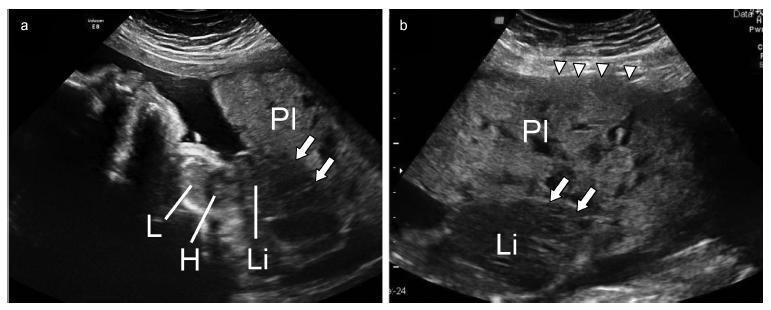
-
Original Article01-01-2018
Body Mass Index Changes during Pregnancy and Perinatal Outcomes – A Cross-Sectional Study
Revista Brasileira de Ginecologia e Obstetrícia. 2018;40(1):11-19
Abstract
Original ArticleBody Mass Index Changes during Pregnancy and Perinatal Outcomes – A Cross-Sectional Study
Revista Brasileira de Ginecologia e Obstetrícia. 2018;40(1):11-19
Views219See moreAbstract
Objective
To evaluate the relation between changes the body mass index (BMI) percentile, reflected in the Atalah curve, and perinatal outcomes.
Methods
A cross-sectional study with 1,279 women was performed. Data regarding gestational weight, sociodemographic characteristics and perinatal outcomes were collected through medical charts, prenatal card and interviews in the postpartum period. Women could be classified according to the Atalah curve in the following categories: low weight, adequateweight, overweight, and obese. The BMIwas calculated at the first and at the last prenatal care visits, and these values were compared.
Results
An increase in the BMI category according to the Atalah classification occurred in 19.9% of pregnant women, and an increase of 3.4, 5.8 and 6.4 points of BMI were found for women respectively classified in the adequate weight, overweight and obese categories at the first prenatal visit. Women with high school education presented a lower chance of increasing their BMI (odds ratio [OR] 0:47 [0.24- 0.95]). Women who evolved with an increase in the the Atalah classification were associated with cesarean section (OR 1.97-2.28), fetalmacrosomia (OR 4.13-12.54) and large for gestational age newborn (OR 2.88-9.83).
Conclusion
Pregnant women who gained enough weight to move up in their BMI classification according to the Atalah curve had a higher chance of cesarean section and macrosomia. Women classified as obese, according to the Atalah curve, at the first prenatal visit had a high chance of cesarean section and delivering a large for gestational age newborn.
-
Original Article03-01-2018
Improving Perinatology Residents’ Skills in Breaking Bad News: A Randomized Intervention Study
Revista Brasileira de Ginecologia e Obstetrícia. 2018;40(3):137-146
Abstract
Original ArticleImproving Perinatology Residents’ Skills in Breaking Bad News: A Randomized Intervention Study
Revista Brasileira de Ginecologia e Obstetrícia. 2018;40(3):137-146
Views233Abstract
Objective
Breaking bad news (BBN) is particularly difficult in perinatology. Previous research has shown that BBN skills can be learned and improved when taught and practiced. This project evaluated whether a structured training session would enhance perinatology residents’ skills in BBN.
Methods
This was a randomized controlled intervention study with year 1 to 4 Perinatology residents from a medical school in Brazil, during the 2014/15 school year. A total of 61 out of 100 (61%) eligible residents volunteered to a structured training program involving communicating a perinatal loss to a simulated patient (SP) portraying the mother followed by the SP’s immediatefeedback,bothvideo recorded. Later, residents were randomly assigned to BBN training based on a setting, perception, invitation, knowledge, emotion and summary (SPIKES) strategy with video reviews (intervention) or no training (control group). All residents returned for a second simulation with the same SP blinded to the intervention and portraying a similar case. Residents’ performances were then evaluated by the SP with a checklist. The statistical analysis included a repeated measures analysis of covariance (RM-ANCOVA). Complementarily, the residents provided their perceptions about the simulation with feedback activities.
Results
Fifty-eight residents completed the program. The simulations lasted on average 12 minutes, feedback 5 minutes and SPIKES training between 1h and 2h30m. There was no significant difference in the residents’ performances according to the SPs’ evaluations (p = 0.55). The participants rated the simulation with feedback exercises highly. These educational activities might have offset SPIKES training impact. Conclusion The SPIKES training did not significantly impact the residents’ performance. The residents endorsed the simulation with feedback as a useful training modality. Further research is needed to determine which modality is more effective.
Key-words educationHealth communicationinternship and residencymedicalpatient simulationperinatologySee more -
Case Report09-01-2018
Diagnosis of Atelosteogenesis Type I suggested by Fetal Ultrasonography and Atypical Paternal Phenotype with Mosaicism
Revista Brasileira de Ginecologia e Obstetrícia. 2018;40(9):570-575
Abstract
Case ReportDiagnosis of Atelosteogenesis Type I suggested by Fetal Ultrasonography and Atypical Paternal Phenotype with Mosaicism
Revista Brasileira de Ginecologia e Obstetrícia. 2018;40(9):570-575
Views245Abstract
Atelosteogenesis type I (AOI) is an autosomal dominant skeletal dysplasia caused by mutations in the filamin B (FLNB) gene with classic and well-recognizable clinical findings. However, parents affected with a mild phenotype, probably with somatic mosaicism, can generate offspring with a much more severe phenotype of AOI. In the present report, we describe a female newborn with classic AOI leading to early neonatal death, whose diagnostic was based on prenatal radiological findings and on the physical examination of the father. Since her father had limb deformities and corporal asymmetry, suggesting somatic mosaicism, his biological samples were analyzed through a gene panel for skeletal dysplasias. A missense mutation not previously described in the literature was detected in the FLNB gene, affecting ~ 20% of the evaluated cells and, therefore, confirming the diagnosis ofmosaic AOI in the father. The molecular analysis of the father was crucial to suggest the diagnosis of AOI in the newborn, since she died early and there were no biological samples available.
Key-words atelosteogenesisexome-target sequencingFetal ultrasonographyFLNBskeletal dysplasiasomatic mosaicismSee more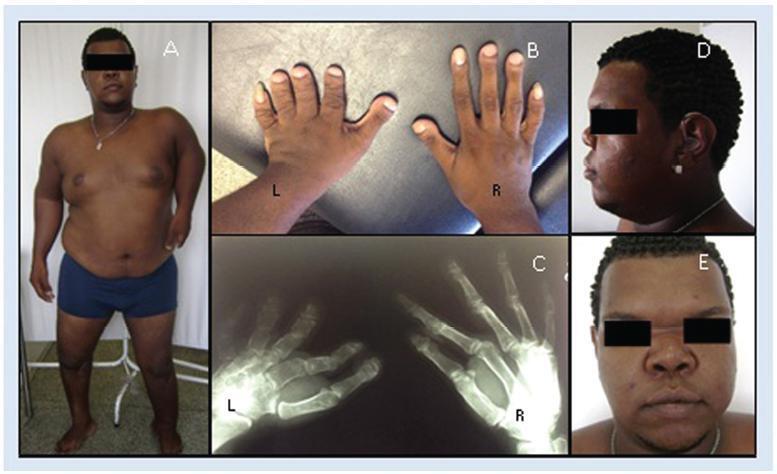
-
Case Report01-24-2021
Antenatal Diagnosis of Parapagus Conjoined Twins: 3D Virtual and 3D Physical Models
Revista Brasileira de Ginecologia e Obstetrícia. 2021;43(12):985-987
Abstract
Case ReportAntenatal Diagnosis of Parapagus Conjoined Twins: 3D Virtual and 3D Physical Models
Revista Brasileira de Ginecologia e Obstetrícia. 2021;43(12):985-987
Views233See moreAbstract
Conjoined twins (CTs) are a rare complication from monochorionic and monoamniotic twin pregnancies. We describe the use of 3D technologies, including 3D virtual and 3D physical models on prenatal evaluation of one parapagus CT. A 16-year-old G1P0 woman was referred for fetal magnetic resonance imaging (MRI) anatomical evaluation of a CT at 28 weeks of gestation. 3D images of the fetal surface were generated by the software during the examination for spatial comprehension of the relationship between the fetal parts. The pair of CTs died at the 32nd week of gestation, a few hours after cesarean section. 3D technologies are an important tool for parental counseling and preparation of the multidisciplinary care team for delivery and neonatal assistance and possible surgical planning for postnatal separation in CTs cases.
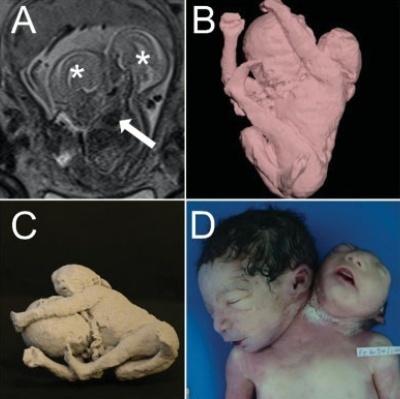
-
Original Article05-24-2021
Disease Progression and Obstetric Outcomes of Women with Multiple Sclerosis at a Reference Center in Northeastern Brazil
Revista Brasileira de Ginecologia e Obstetrícia. 2021;43(3):165-171
Abstract
Original ArticleDisease Progression and Obstetric Outcomes of Women with Multiple Sclerosis at a Reference Center in Northeastern Brazil
Revista Brasileira de Ginecologia e Obstetrícia. 2021;43(3):165-171
Views250See moreAbstract
Objective
To describe the obstetric outcomes of patients withmultiple sclerosis (MS) and the impact of pregnancy and the postpartum period on the progression of the disease.
Methods
A case series study performed between December 2019 and February 2020, reporting pregnancies occurred between 1996 and 2019. The subjects included were women with MS undergoing follow-up at an MS referral center in Northeastern Brazil, and who had at least one pregnancy after the onset of MS symptoms, or who had their first relapse in the first year after delivery.
Results
In total, 26 women and 38 pregnancies were analyzed – 32 of them resulted in delivery, and the remaining 6, in miscarriages. There was a significant increase in the prevalence of relapse during the postpartum period when compared with the gestational period. In 16 (42.1%) of the pregnancies, there was exposure to diseasemodifying therapies (DMTs) – 14 (36.8%), to interferon β, and 2 (5.3%), to fingolimod. Higher rates of abortion, prematurity and low birth weight were reported in the group was exposed to DMT when compared with the one who was not.
Conclusion
In the sample of the present study, there was a significant increase in the rate of MS relapse during the postpartum period when compared with the gestational period. Additionally, it seems that exposure to DMTs during pregnancy may affect the obstetric outcomes of the patients.
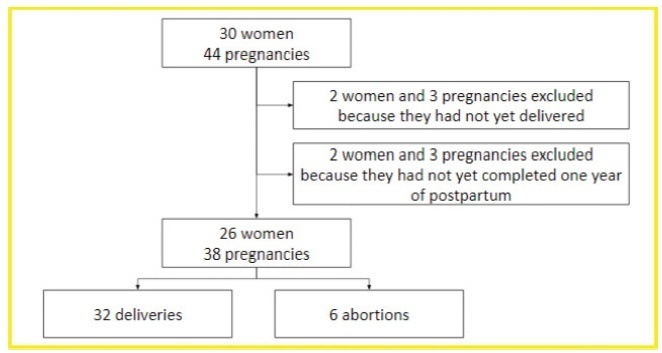
-
FEBRASGO POSITION STATEMENT01-23-2022
Screening, diagnosis and management of hypothyroidism in pregnancy: Number 10 – October 2022
Revista Brasileira de Ginecologia e Obstetrícia. 2022;44(10):999-1009
Abstract
FEBRASGO POSITION STATEMENTScreening, diagnosis and management of hypothyroidism in pregnancy: Number 10 – October 2022
Revista Brasileira de Ginecologia e Obstetrícia. 2022;44(10):999-1009
Search
Search in:
Tag Cloud
Pregnancy (252)Breast neoplasms (104)Pregnancy complications (104)Risk factors (103)Menopause (88)Ultrasonography (83)Cesarean section (78)Prenatal care (71)Endometriosis (70)Obesity (61)Infertility (57)Quality of life (55)prenatal diagnosis (51)Women's health (48)Maternal mortality (46)Postpartum period (46)Pregnant women (45)Breast (44)Prevalence (43)Uterine cervical neoplasms (43)


